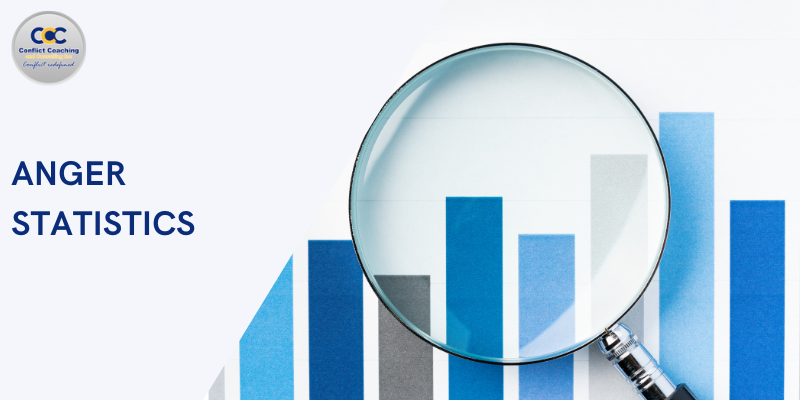
15+ Anger Statistics 2025: Global Trends That Reveal a Rising Crisis
Anger is no longer just a fleeting emotion — it’s a global mental health and social concern.
From road rage and workplace outbursts to family conflicts and online aggression, expressions of anger are increasing in frequency and intensity across all age groups and cultures.
The consequences are serious: unresolved anger is tied to a higher risk of cardiovascular disease, burnout, domestic violence, and impaired relationships.
Why does tracking anger statistics matter now more than ever? Because the emotional climate of our world is shifting.
Various research publications show a widespread perception that society is becoming more hostile, less tolerant, and more reactive.
At the same time, only a small fraction of those struggling with chronic anger actually seek professional help, leaving many to cope in silence or lash out in harmful ways.
Whether triggered by economic pressure, political division, or digital overload, anger is now shaping our health, behavior, and daily interactions.
And yet, anger remains deeply misunderstood — often viewed as a weakness or personality flaw rather than a treatable emotional condition.
This blog explores the latest global data on anger in 2025: its prevalence, cultural differences, health implications, and the most affected populations.
15+ Key Anger Statistics You Should Know in 2025
As the world becomes increasingly reactive and emotionally strained, examining the latest anger statistics is essential to understanding how this emotion is shaping our societies, workplaces, and families.
Backed by recent findings from reputable organizations such as Gallup, Crown Counseling, and the Centers for Disease Control and Prevention (CDC), these statistics uncover the depth of the anger crisis in 2025.
1. Global Prevalence of Anger
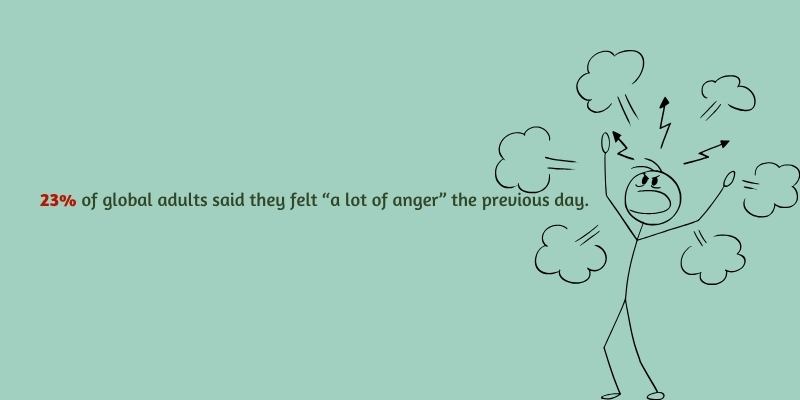
The global anger data for 2024 shows that anger is no longer a localized or isolated concern — it’s a widespread issue affecting nearly a quarter of the global population.
Experts from organizations like APA (American Psychological Association) emphasize that tracking anger trends over time is essential for public health and emotional well-being.
Daily Anger Reports
According to the Gallup Global Emotions Report (2024), 23% of global adults said they felt “a lot of anger” the previous day.
This figure reflects a growing emotional strain, particularly in countries facing political unrest, economic instability, or post-pandemic trauma.
Chronic Anger Prevalence
According to Crown Counseling (2024), an estimated 7–11% of people worldwide live with chronic anger issues.
This includes conditions like Intermittent Explosive Disorder (IED) and Oppositional Defiant Disorder (ODD) — diagnosable forms of emotional dysregulation that often remain untreated due to stigma or lack of awareness.
People suffering from chronic anger may experience persistent impulse control problems, high irritability, and an inability to resolve conflicts peacefully.
These individuals are also at a significantly higher risk for cardiovascular disease, relationship conflict, and domestic violence.
2. Crisis-Driven Anger Trends
Anger often reflects deeper stressors within society. From pandemics to recessions, anger trends spike dramatically during times of crisis and uncertainty.
The COVID-19 pandemic, in particular, was a global inflection point: it not only disrupted daily routines but also exposed deep emotional vulnerabilities in individuals, families, and communities.
As millions faced lockdowns, job losses, and grief, frustration tolerance plummeted and emotional outbursts soared.
Pandemic-Induced Anger
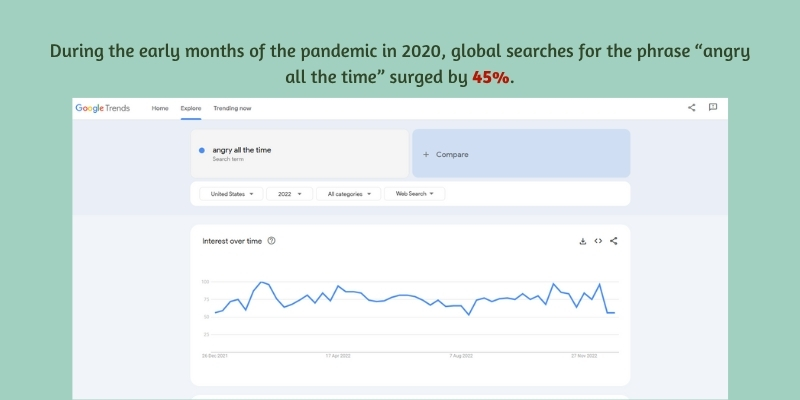
One of the clearest digital indicators of rising anger came from Google Trends.
During the early months of the pandemic in 2020, global searches for the phrase “angry all the time” surged by 45%, reflecting widespread emotional dysregulation, uncertainty, and impulse control issues.
This behavior continued into 2021–2022, as lockdowns, school closures, and remote work amplified relationship conflict and public aggression.
This period also revealed how sustained isolation and lack of routine can act as a trauma response, particularly for those with prior anxiety or depressive disorders.
Economic Stress
Beyond health fears, the economic fallout of the pandemic and recent inflation surges continue to fuel emotional instability.
Studies show that anger peaks during financial crises, especially when paired with unemployment surges, job insecurity, or loss of housing.
According to data from NIH, financial hardship is one of the strongest anger triggers, particularly among middle-aged adults and men.
This type of anger often leads to hostility at work, domestic conflict, and reduced frustration tolerance — all while access to mental health support becomes more limited due to cost or stigma.
For employers, this means increased burnout, absenteeism, and workplace conflict — a pattern highlighted in reports by CPP Global.
3. Regional & Country-Level Anger Statistics
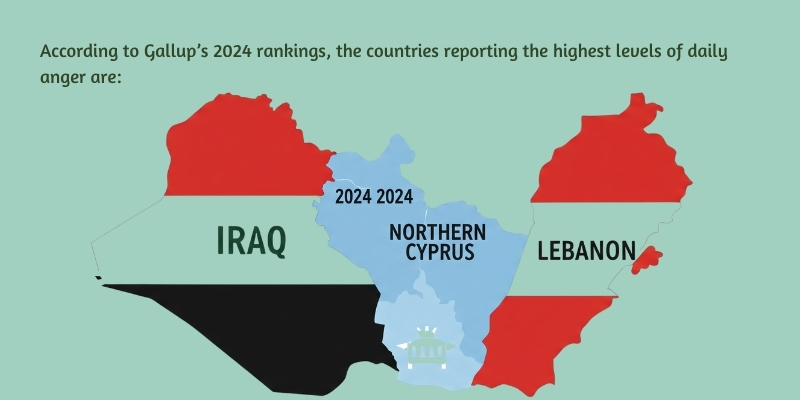
Understanding global anger data requires more than just worldwide averages — it demands a closer look at regional differences and cultural dynamics.
Anger levels can vary widely depending on economic stability, political climate, social norms, and access to mental health services.
Recent findings from the Gallup Global Emotions Report (2024) reveal stark contrasts between countries and continents, reflecting not only lived experience but also cultural norms around anger expression vs suppression.
Regional Trends
Post-pandemic data shows a notable rise in anger across North America, the UK, and the Middle East — regions significantly impacted by COVID-19, political upheaval, and social unrest.
According to the NIH and Pew Research, these areas also reported rising public aggression, increased hostility at work, and strained family relationships.
In the United States, prolonged exposure to misinformation, polarization, and economic stress has triggered widespread frustration.
Highest Anger Levels
According to Gallup’s 2024 rankings, the countries reporting the highest levels of daily anger are:
- Iraq
- Northern Cyprus
- Lebanon
These findings reflect environments affected by ongoing conflict, displacement, and institutional instability. In such settings, impulse control becomes harder to regulate, and public sentiment turns increasingly volatile.
Lowest Anger Levels
In contrast, countries with the lowest anger statistics include:
- Finland
- Portugal
- Singapore
What do they have in common? Strong social safety nets, high emotional intelligence education, and widespread access to behavioral health resources.
These nations also emphasize cognitive behavioral therapy (CBT) and community-based anger management interventions.
4. Cultural Differences in Anger Expression
Culture plays an essential role in how people perceive, manage, and express anger.
For example, what is considered assertive in one culture may be seen as aggressive in another. These differences affect both self-reporting in surveys and real-world behavior.
Cultural context helps explain why anger statistics vary even among countries with similar levels of stress or conflict.
Suppression vs Expression
In general, western cultures (e.g., the U.S., Canada, Australia) tend to encourage emotional expression, even if the emotion is negative.
Speaking up, being assertive, and directly confronting issues are often seen as healthy behaviors.
In contrast, Eastern cultures (e.g., Japan, China, South Korea) typically emphasize emotional restraint, social harmony, and avoidance of conflict.
In these societies, anger is more often internalized or expressed indirectly through silence, sarcasm, or withdrawal.
Faith-Based Perspectives

Religion is another important lens for understanding anger. Across major traditions, anger is seen as a moral and spiritual challenge:
- Islam encourages believers to control anger through prayer (salah), patience (sabr), and reflection.
- Christianity emphasizes forgiveness and warns against wrath as one of the seven deadly sins.
- Buddhism teaches that anger arises from attachment and ignorance. Mindfulness and compassion are tools for transforming negative emotions.
These teachings inform personal and community responses to emotional distress and shape anger coping strategies across societies.
5. Age & Gender-Based Anger Patterns
Anger doesn’t affect everyone equally — age and gender play critical roles in how anger is felt, expressed, and managed.
Hormonal shifts, life stressors, cognitive development, and societal expectations all shape emotional behavior, especially around adolescence and late adulthood.
Understanding these demographics is essential for designing targeted anger management programs, especially in schools and senior communities.
Youth Anger Trends
Young people today are experiencing more intense and frequent anger episodes, largely driven by social media, peer pressure, academic stress, and identity struggles.
- According to the CDC, 64% of teens report struggling with anger control.
- 32% admitted to being involved in physical fights — a strong indicator of externalized aggression.
This population often lacks emotional vocabulary and healthy coping mechanisms, making them more prone to explosive outbursts and impulsive decisions.
Schools and parents are increasingly turning to anger education, teenager anger management classes, and emotional intelligence training to intervene early.
Anger in Older Adults
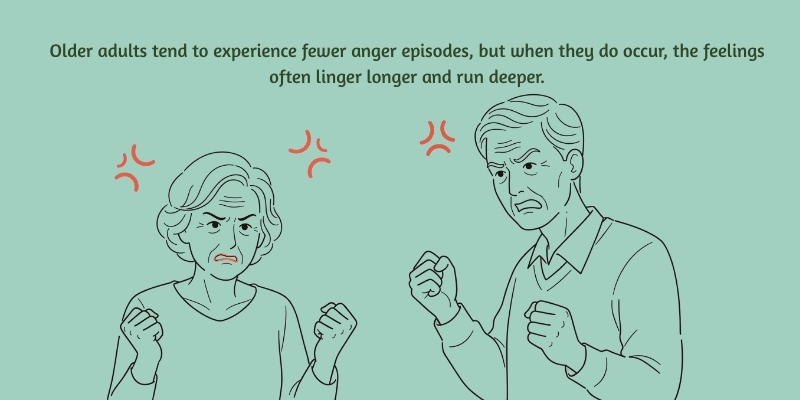
In contrast, older adults tend to experience fewer anger episodes, but when they do occur, the feelings often linger longer and run deeper.
Factors such as chronic illness, grief, cognitive decline, or loss of autonomy contribute to internalized anger in this age group.
Unlike teens, older adults may not express anger outwardly but instead exhibit signs like bitterness, resentment, or withdrawal.
According to the National Institute on Aging, the physiological impact of anger is also more pronounced in seniors, affecting cardiovascular and cognitive health.
6. Anger across Life Roles & Stages
Anger is not just a matter of age or culture — it also varies depending on life roles and responsibilities.
Whether you’re a parent, romantic partner, student, or healthcare worker, unique stressors influence how anger is experienced and expressed.
Understanding these differences is crucial for role-specific anger management interventions and support systems.
Parents

Parenthood is one of the most emotionally demanding roles, especially in households with young children or teenagers. Sleep deprivation, financial strain, and conflicting parenting styles can all fuel parental frustration and anger.
- Studies show many parents experience “parental burnout,” which often manifests as yelling, withdrawal, or guilt after an angry episode.
- Parents may also feel shame for losing control, which reduces the likelihood of seeking support — despite the fact that constructive anger can be a teaching moment for kids if handled well.
Romantic Partners
In intimate relationships, anger often stems from unmet needs, miscommunication, or unresolved conflict. While occasional disagreements are normal, chronic or unmanaged anger can erode trust, safety, and emotional intimacy.
- According to the Gottman Institute, frequent expressions of contempt, defensiveness, or stonewalling are strong predictors of relationship failure.
- Anger in romantic settings may show up as passive-aggressive behavior, emotional withdrawal, or even verbal anger.
Couples therapy often targets communication patterns, helping individuals express frustration without blame or escalation.
College Students
College life introduces new stressors, such as academic pressure, social dynamics, identity formation, and financial insecurity.
Many students struggle with emotional regulation, especially when balancing independence with responsibility.
- Studies indicate increased rates of anger, anxiety, and aggression among college students, often exacerbated by sleep deprivation and social media use.
- According to APA, campuses are seeing a rise in conflict-related disciplinary actions, prompting universities to offer emotional wellness and anger management classes.
Healthcare Workers
Healthcare professionals face constant emotional strain — high patient demands, long shifts, trauma exposure, and sometimes verbal or physical abuse from patients or families.
- According to the World Health Organization, healthcare burnout has reached critical levels post-pandemic, with anger being one symptom of compassion fatigue.
- Anger may be directed inward (shame, guilt) or outward (snapping at coworkers or patients).
- Many professionals report feeling unsupported by administrators when workplace stress overwhelms emotional control.
7. Anger in the Workplace

Anger is one of the most disruptive and costly emotions in the workplace. It affects not only job performance but also team dynamics, leadership effectiveness, and employee well-being.
According to multiple surveys, workplace anger is rising due to toxic environments, poor leadership, and overwork.
Anger Frequency & Impact
- 45% of employees admit to losing their temper at work.
- 23% report that anger is a primary source of job-related stress.
Anger can lead to verbal confrontations, passive resistance, or even sabotage. It also increases the risk of burnout, absenteeism, and turnover.
Teacher-Specific Trends
Educators are one of the most emotionally burdened professions today. Increasing violence, lack of support, and unrealistic performance expectations have led to rising anger levels among teachers:
- 20% of teachers report seeking mental health support specifically for anger-related issues.
- 45% witness student aggression or violence regularly.
Unaddressed anger affects classroom morale, student safety, and teacher retention.
High-Anger Professions
Some industries carry built-in emotional risks due to high-stress interactions, tight deadlines, or public-facing roles. These include:
- Healthcare
- Education
- Law enforcement
- Customer service
Workers in these sectors are more prone to chronic irritability, outbursts, and conflict escalation, especially when empathy fatigue and low autonomy are present.
8. Road Rage & Public Aggression
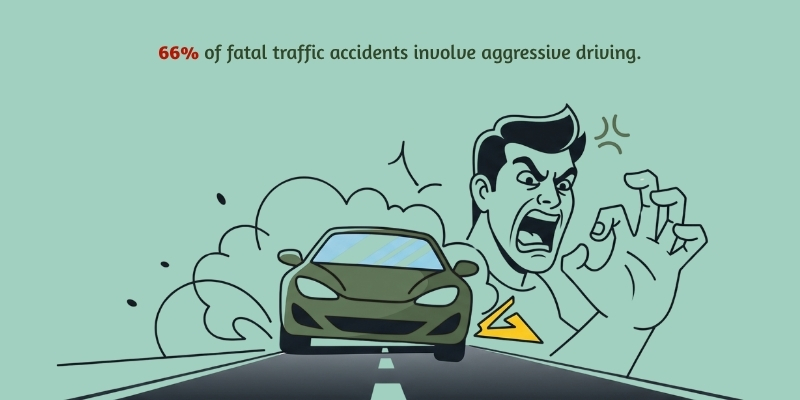
Anger doesn’t stay confined to homes or offices — it also spills into the public, particularly on roads and in service spaces. Public aggression has surged since 2020, often driven by post-pandemic irritability, staff shortages, and increased wait times.
Road Rage Statistics
- 66% of fatal traffic accidents involve aggressive driving, according to the NHTSA.
- 80% of drivers admit to experiencing road rage.
- 25% accept personal responsibility for aggressive behavior on the road.
Common triggers of road rage include tailgating, cutting off, and honking, often escalated by perceived disrespect.
Understanding the consequences, exploring latest statistics, and enrolling in an online aggressive driving class can control this issue and prevent accidents.
9. How Anger Is Expressed Today
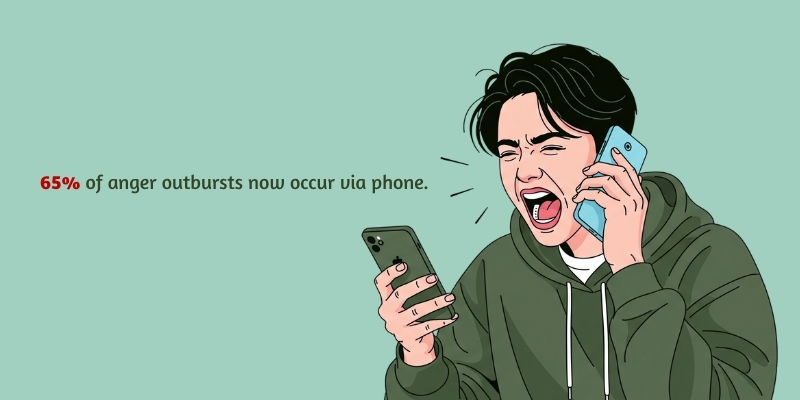
- 65% of anger outbursts now occur via phone
- 26% happen through text or email
- Only 9% occur face-to-face
The shift to digital communication has created a “distance buffer,” making it easier for people to lash out without immediate consequences.
This has increased the frequency of impulsive, poorly regulated expressions of anger, especially in younger generations.
10. Youth Anger & Technology
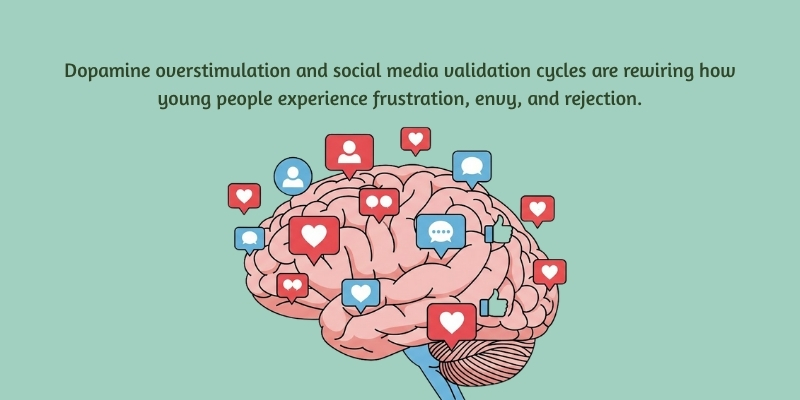
Modern technology, particularly early smartphone exposure, has had a measurable effect on anger levels in youth. Constant notifications, social comparison, and dopamine loops contribute to emotional reactivity.
Impact of Early Smartphone Use
According to Sapien Labs 2025, early smartphone users (especially Gen Z) are more irritable, more prone to emotional outbursts, and less resilient than older generations.
- Dopamine overstimulation and social media validation cycles are rewiring how young people experience frustration, envy, and rejection.
- Youth raised with devices before age 10 show higher baseline stress and anger.
Parental Challenges
- 63% of parents feel unprepared to manage their child’s anger.
- Only 12% seek professional help, even when problems persist.
Many parents lack awareness or access to emotional education tools. Others minimize early signs of anger until they escalate into behavioral issues, school conflict, or self-harm.
11. Common Triggers & Environments for Anger
Understanding where and why anger occurs helps target prevention efforts. In 2025, digital spaces, ideological divides, and competitive environments are the most common triggers.
- Online Gaming: Online multiplayer platforms often lead to frustration, especially among younger users. Toxicity, harassment, and lag-related irritation contribute to hostile behavior.
- Political Division: Polarized ideologies drive heated debates online and offline. Outrage culture, social media echo chambers, and misinformation heighten emotional reactivity.
- Sports Aggression: Both spectators and players experience elevated adrenaline, which often leads to verbal or physical aggression during games.
12. Physical Health Impacts of Anger
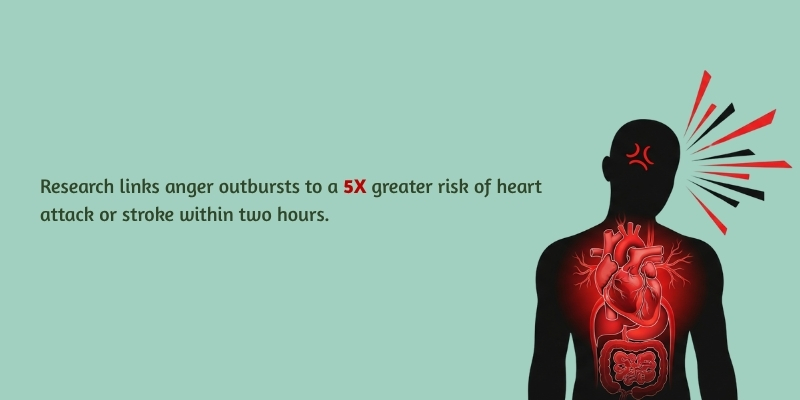
Anger doesn’t just affect mood — it physically strains the body, particularly the heart and immune system.
Cardiovascular Risks
Research links anger outbursts to a 5X greater risk of heart attack or stroke within two hours. Long-term hostility raises heart disease risk by 1.7X.
Other Health Consequences
Frequent anger contributes to insomnia, immune suppression, and high blood pressure — all of which degrade quality of life over time.
13. Anger & Mental Health
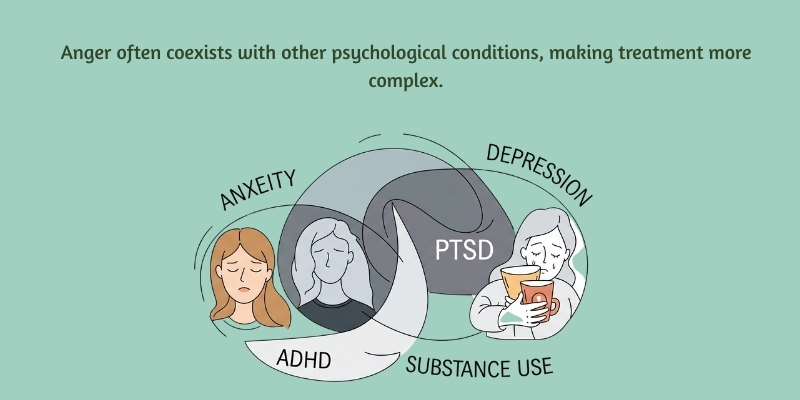
Anger often coexists with other psychological conditions, making treatment more complex.
Anxiety & Depression
- 30% of those with depression frequently feel irritable or hostile.
Comorbid Conditions
Anger overlaps with PTSD, ADHD, and substance use disorders. Emotional reactivity can intensify symptoms or hinder recovery.
14. Economic Impact of Anger
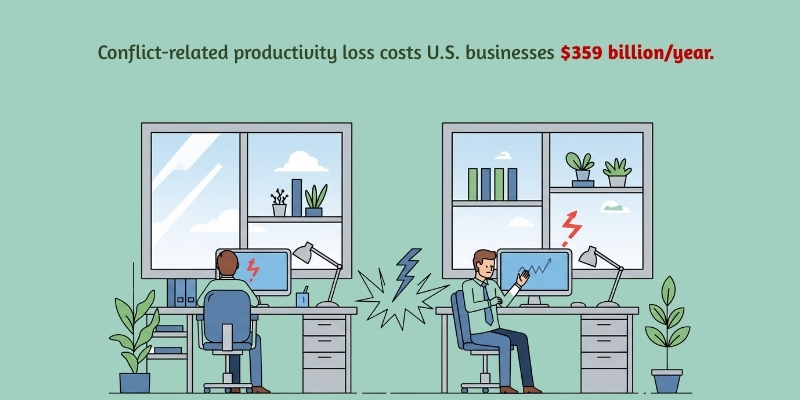
Anger comes at a steep cost — not just emotionally, but economically.
Cost to Employers
Conflict-related productivity loss costs U.S. businesses $359 billion/year (CPP Global). Turnover, absenteeism, and team dysfunction are key issues.
Health-Related Costs
Patients with chronic anger use healthcare 2X more frequently, burdening both public and private systems.
15. Anger in Relationships & Family Life
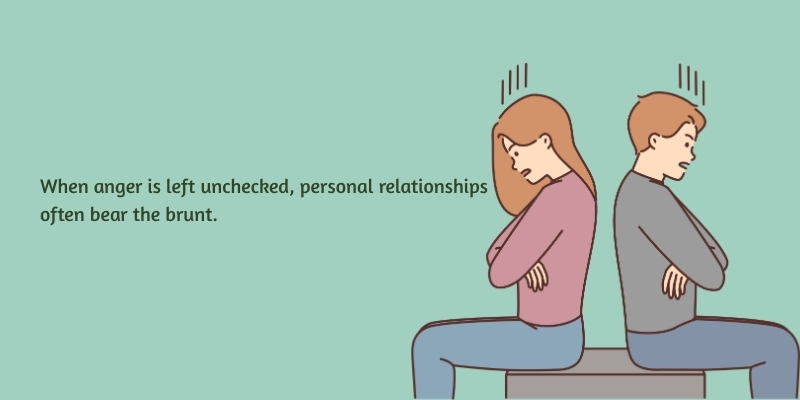
When anger is left unchecked, personal relationships often bear the brunt.
Domestic Violence
Anger is a common precursor to emotional, physical, or verbal abuse. Tension, control issues, and unresolved trauma fuel conflict in homes.
Divorce
Unmanaged anger increases the risk of separation and divorce, especially when conflict resolution skills are lacking.
Child Behavior
Children exposed to parental anger are more likely to display aggression, anxiety, or withdrawal at school or home.
16. Anger Management & Interventions

Not all anger is harmful — but recognizing and managing it is key.
Therapy-Seeking Rates
- Fewer than 15% of those with anger issues seek help, due to stigma, denial, or lack of access.
Evidence-Based Treatments
- CBT (Cognitive Behavioral Therapy) and mindfulness reduce anger by 30–50%.
- Journaling and “write-and-discard” methods helped 70% of participants in trials.
Ineffective Methods
- Catharsis-based approaches — like hitting a pillow — may increase aggression, not relieve it.
Frequently Asked Questions
How common is anger?
Anger is surprisingly common. About 23% of adults report feeling intense anger daily, and 7% to 11% live with chronic anger issues. It’s one of the most underreported emotional health challenges globally.
Which countries report the highest anger levels?
According to recent Gallup Global Emotions data, Iraq, Lebanon, and Armenia consistently top the global anger rankings. Factors like political instability, economic hardship, and trauma exposure play a significant role in these trends.
Conclusion
In 2025, anger is not only more visible — it’s more volatile. According to the latest anger statistics, across all demographics, life roles, and environments, people are experiencing heightened frustration, hostility, and reactivity.
From workplace confrontations to public road rage and tech-driven aggression, anger has become a defining emotional trend of the decade.
What’s more concerning is its toll on both mental and physical health. Unresolved anger is linked to heart disease, stroke, sleep disorders, and depression, yet many continue to suffer in silence.
Despite the availability of evidence-based anger management interventions like CBT, mindfulness, and emotional regulation training, stigma and denial prevent widespread treatment.
Ultimately, the key lies in early intervention, public awareness, and a cultural shift toward emotional literacy.


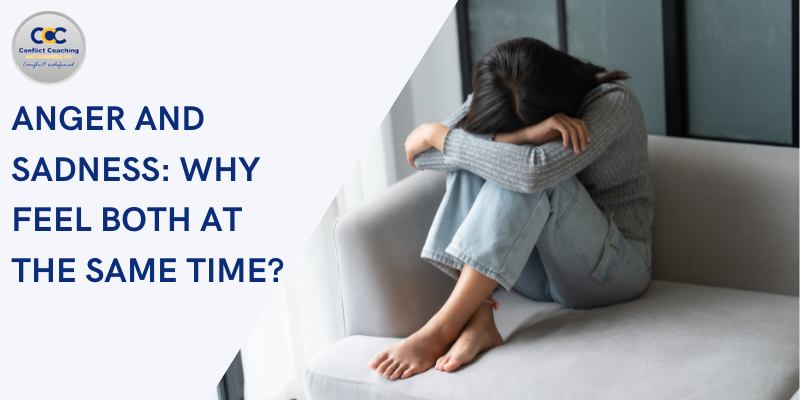

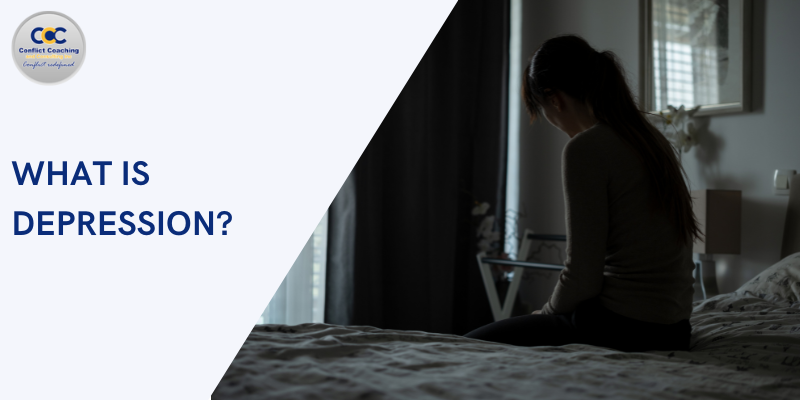
[…] struggling in silence. The digital age has fundamentally transformed how we express anger, with 65% of outbursts now occurring through phone calls rather than face-to-face confrontations. Research shows that […]
Thank you for your effort to compile this information and post this article. I have been quietly watching the world around me and “feel” like people are raging out more and more often. Of course, it’s hard to quantify and substantiate this because it’s difficult to separate what’s real or not with so many things being shown on social media…..meaning, is there really a dramatic increase or does it “feel” like there is because of the amount of exposure today versus 40 years ago. It’s the same with crime statistics, where crime in the US is lower per capita, but people “feel” like it’s worse because it’s in our face everyday…..everything is a crisis, or a “Breaking News!!!” alert. Anger and anxiety sells because it elicits an emotional response that keeps people engaged in their social media, which drives ad revenue. So, separating truth from subjective perception is difficult.